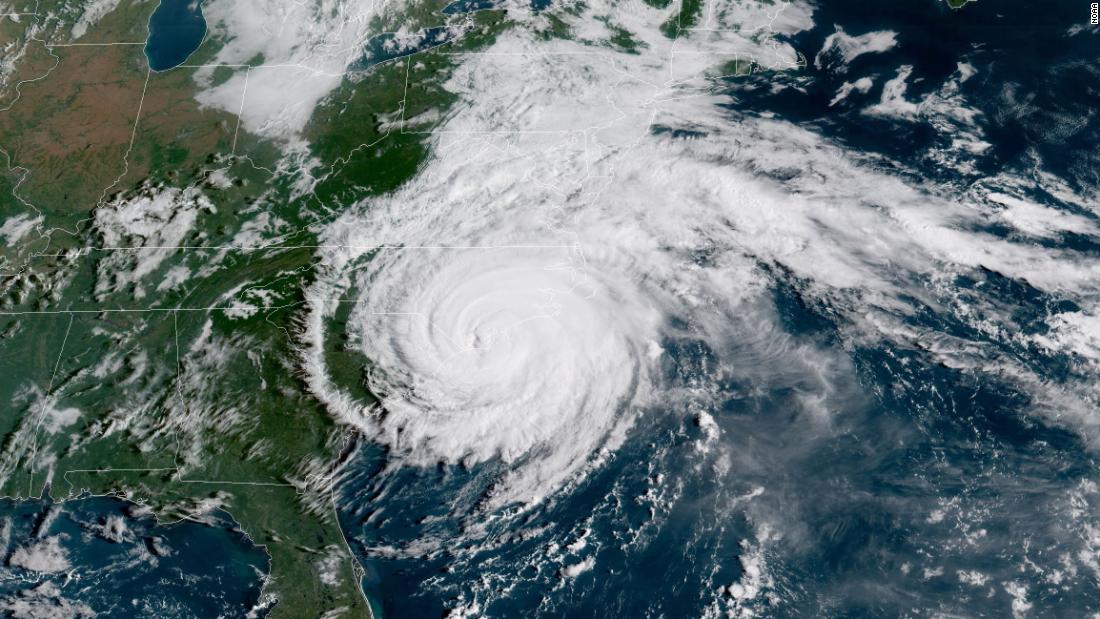[ad_1]
Florence’s center may linger for another whole day along coastal North and South Carolina — punishing homes with crushing winds and floods and endangering those who’ve stayed behind.
In the besieged North Carolina city of New Bern, rescuers by midmorning Friday had plucked more than 200 people from rising waters, but about 150 more had to wait as conditions worsened and a storm surge reached 10 feet, officials said.
“In a matter of seconds, my house was flooded up to the waist, and now it is to the chest,” said Peggy Perry, who along with three relatives, was trapped early Friday in her New Bern home. “We are stuck in the attic.”
Officials urged residents there to take shelter at the highest points of their homes, including rooftops.
Florence’s rain will reach 40 inches in some parts of the Carolinas, forecasters said. Rainfall totals will be similar to those in hurricanes Dennis and Floyd in 1999, Chris Wamsley of the National Weather Service said Friday morning.
“The only difference is, back then it was within 14 days,” he said. With Florence, “we’re looking at the same amount of rainfall in three days.”
“This is not the end of it,” Jeff Byard of FEMA added, noting that heavy rain and surge will continue for another 24 to 36 hours. “Those citizens that did not heed the evacuation warnings, it’s time to stay where you are and do the best you can” to protect yourself and your family.
By Friday morning, Florence already had:
• Sapped power to more than 500,000 customers in North and South Carolina, emergency officials said.
• Forced 26,000 people into more than 200 emergency shelters across the Carolinas.
• Forced more than 60 people to evacuate a hotel in Jacksonville, North Carolina, after part of the roof collapsed, city officials said.
Hours earlier, streets along the coast had been transformed into raging streams, and massive waves surged along the Outer Banks.
“There’s already water (in the) bottom part of people’s houses,” Todd Willis, who lives in Kennel Beach, North Carolina, said Thursday night. “This is just the beginning.”
Latest developments
• Areas threatened: Hurricane and storm surge warnings are in effect for South Santee River in South Carolina to Duck, North Carolina, and the Albemarle and Pamlico sounds. Surges of 10 feet had been reported early Friday Morehead City and elsewhere in North Carolina, the National Weather Service said.
• Location of Florence: By 9 a.m. Friday, the hurricane was about 20 miles southwest of Wilmington and was crawling at 6 mph, with maximum sustained winds of 85 mph.
• Record gusts: Wilmington’s airport recorded a 92-mph wind gust Friday morning — the fastest measured since Hurricane Donna hit the city in 1960, the NHC said.
• Thanks from Trump: President Trump tweeted his thanks to first responders Friday morning. “Incredible job being done by FEMA, First Responders, Law Enforcement and all. Thank you!” he tweeted.
Rescues and narrow escapes
Florence’s circulation was pushing water ashore, especially north of its eye, in coastal or riverside towns like New Bern and Belhaven, turning land to lakes.
In Belhaven, the Pungo River roared into town, crashing up against homes at a waist-high level and higher late Thursday and early Friday, video from Amy Johnson showed.
Morehead City resident Rebecca Marson decided not to evacuate because her surgeon husband wanted to remain behind with other first responders. They’re riding out the storm at their home with four children — ages 11 to 17 — Marson’s friend, four dogs, two chinchillas, a cat and a lizard.
Marson said they’d lost power and the winds were howling outside, but they had enough food and water to last them for days.
New Bern’s WCTI television employees fled their studio Thursday night due to rising flood waters. Footage posted on social media showed a meteorologist saying on air that they had to evacuate. He then leaves the studio and leaves a radar of Florence’s rain bands playing on a loop.
Officials in several states have declared states of emergency, including in the Carolinas, Georgia, Virginia and Maryland, where coastal areas are still recovering from summer storms.
Florence is one of four named storms in the Atlantic.
CNN’s Judson Jones, Kaylee Hartung, Chuck Johnston, AnneClaire Stapleton, John Berman, Michelle Krupa, Dianne Gallagher, Marnie Hunter, Amanda Jackson, Holly Yan and Michael Guy contributed to this report.
[ad_2]
Source link






